April 27, 2016
Today was our last day in Okinawa and we had originally planned on going to the Okinawa Peace Memorial Park in Itoman and visit the Shuri Castle in Naha. But after some research on transportation to Itoman, and the infrequent buses to the Peace Memorial Park, we would only be able to fit in one attraction. We both picked the Peace Memorial Park over Shuri Castle. We’ll have to visit Shuri Castle on our next trip here.
Tim and I are both very interested in World War II history so whenever we go somewhere that was involved in the war or has something WWII related, it’s always on our list to visit. We were able to visit the National WWII Museum in New Orleans last year and Pearl Harbor in Oahu in 2014 together. With Japan playing a significant role in WWII, on the axis side, it was interesting to see the country’s perspective on events during that period of time while visiting Hiroshima and now, Okinawa.
Okinawa Prefectural Peace Memorial Park was quite a trek from Naha. We had a late start to the day as we were taking it easy after yesterday’s long trek out to Nago. Tim made the instant noodles that he had bought the other day from Chatan for an early lunch.
We walked to Asahibashi Bus Terminal and took the #89 bus to Itoman Bus Terminal and this took about an hour. Itoman is located on the southern tip of Okinawa island, and is only about 13km away from Naha. Once we got to Itoman Bus Terminal, we asked what time the #82 bus (to the Peace Memorial Park) is set to leave and a man who was sitting outside the bus office said the next one wouldn’t be until 2:50pm (which was more than an hour and a half from then). We looked around the bus terminal area and it was pretty dead and nothing of interest around. Tim looked at Google Maps and it said we were about 10km away from the Memorial Park so we decided to just walk (Tim: I like to think in terms of the Stanley Park Sea Wall, so 10km is around 1 loop around Stanley Park, no problem). It was about 25 degrees Celsius and overcast with a slight breeze, so walking didn’t seem like a bad idea.




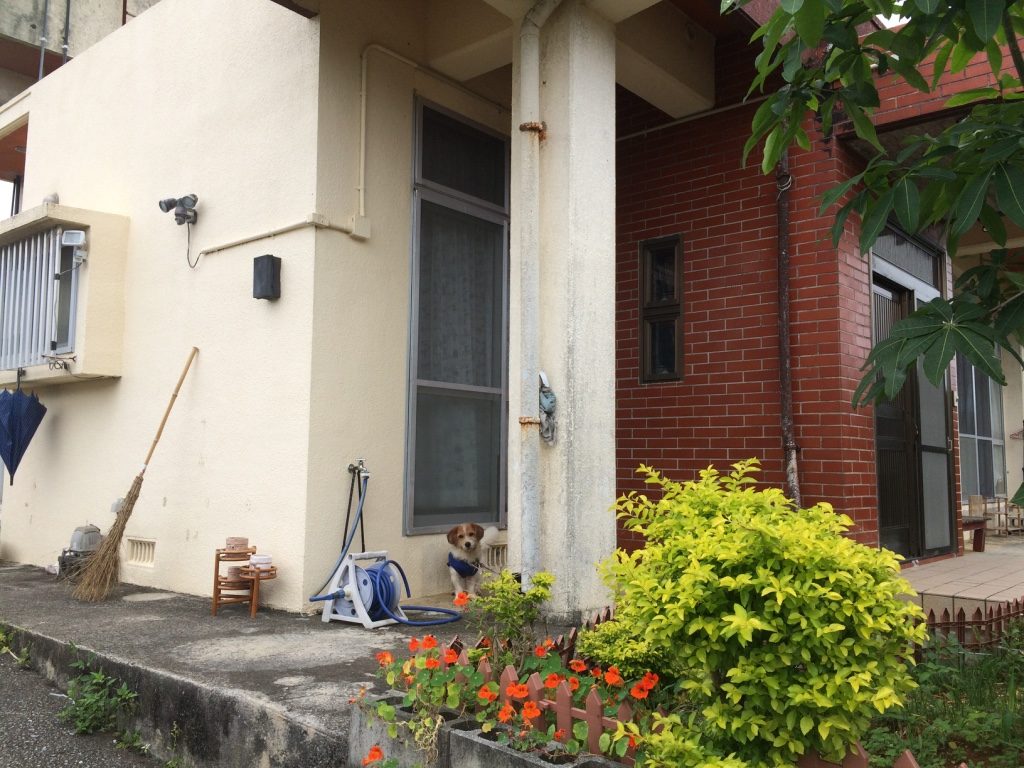
Since we were walking, we also decided to visit the Himeyuri Monument, which was about 6km from the bus terminal. The Himeyuri Monument was built to honour a group of over 230 female students and teachers from a Naha high school who, during WWII, were forced to become a nursing unit by the Japanese government. They were performing surgeries and eventually ended up living in dark caves to hide from the Americans along side gravely injured and dead Japanese soldiers. But during the battle of Okinawa, 80% of them died in an attack.
(Tim: We learned at the Peace Museum that the girls, along with a lot of other Okinawan civilians, were in a horrific position during the war. Near the end of the fighting, while in these caves that became makeshift bunkers and field hospitals, the US soldiers would move across the land, find caves, tell those inside to surrender, or they would attack. For Okinawan civilians, if they tried to surrender, the Japanese Soldiers would kill them. If they stayed put, the US Soldiers would attack and most likely kill them. It’s no wonder so many Okinawans died during the Battle of Okinawa.)

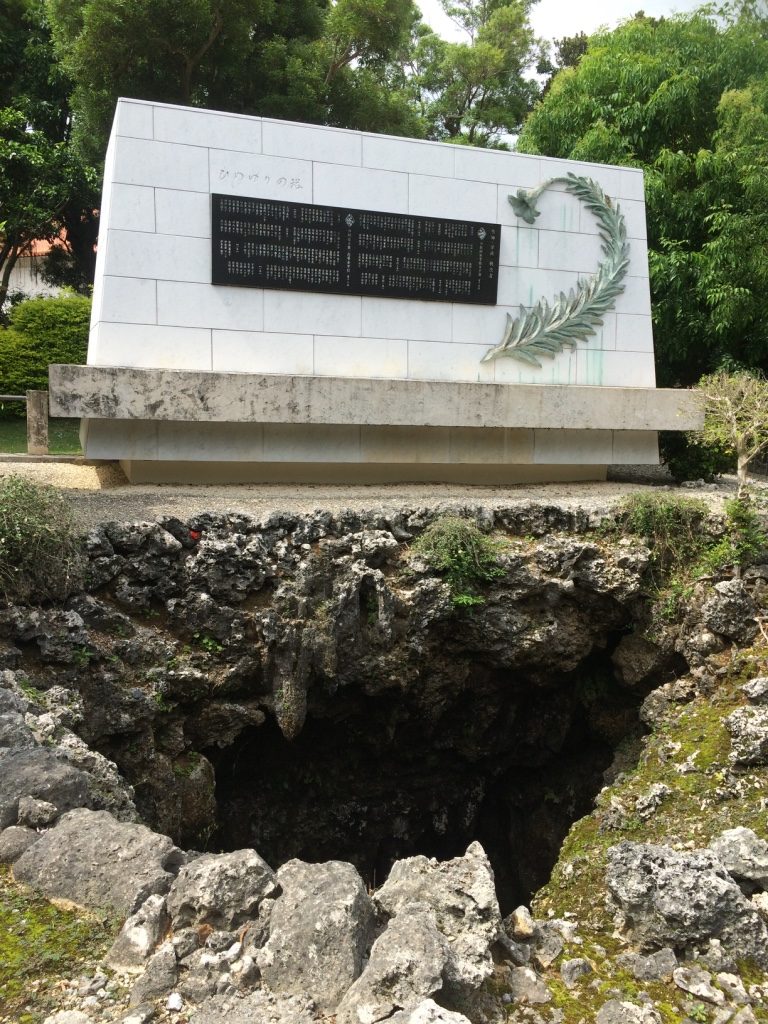
The Himeyuri Memorial was small and peaceful. There were a couple of Japanese school tours there as well. There is a museum (310 JPY entrance) there as well, and it is built to replicate the high school building where the girls went to school.

We continued down the road towards the Memorial Peace Park, which was another 4km away. We eventually made it there, all sweaty and sticky. I wore a grey cotton t-shirt today, which was probably the wrong choice for today’s activity.

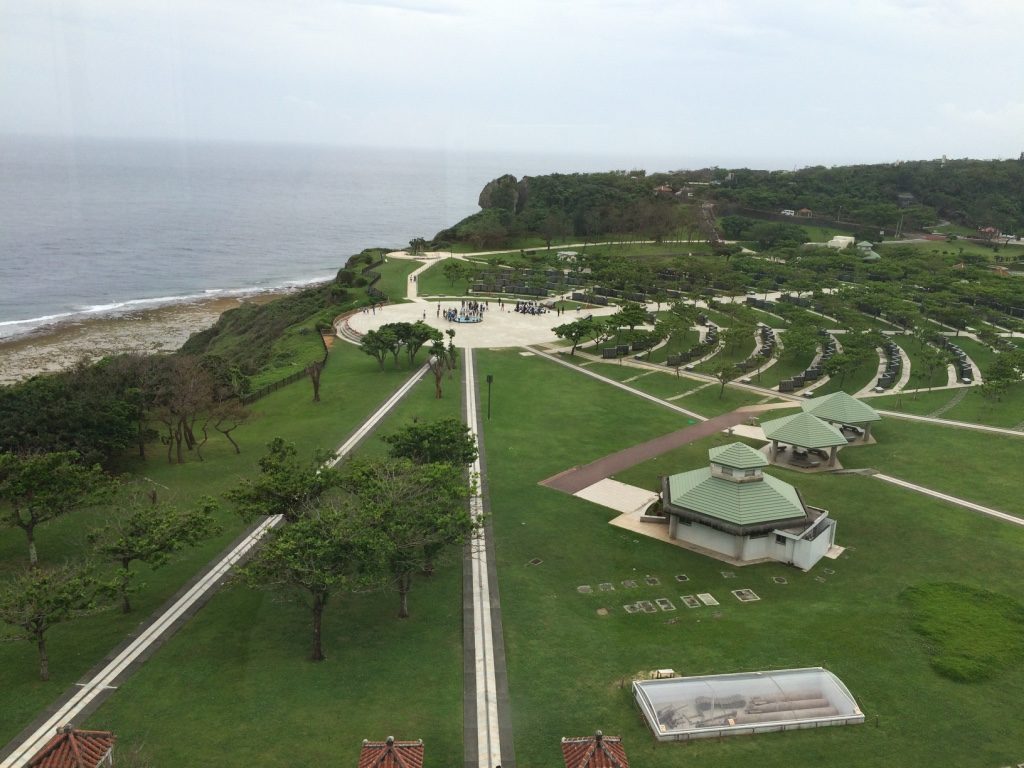
The Okinawa Memorial Peace Park is beautifully set upon the Mabuni Hill area of Itoman and is the actual spot where the last battle of Okinawa occurred. We headed straight for the museum, which closed at 5pm, so we had about 2 hours to spend there. It was 300 JPY = $3.40 CAD to enter and there were free English audio guides which helped a lot. Although most signage was translated into English, a lot of the smaller details only have Japanese, so I would recommend asking for an audio guide at the ticket counter.
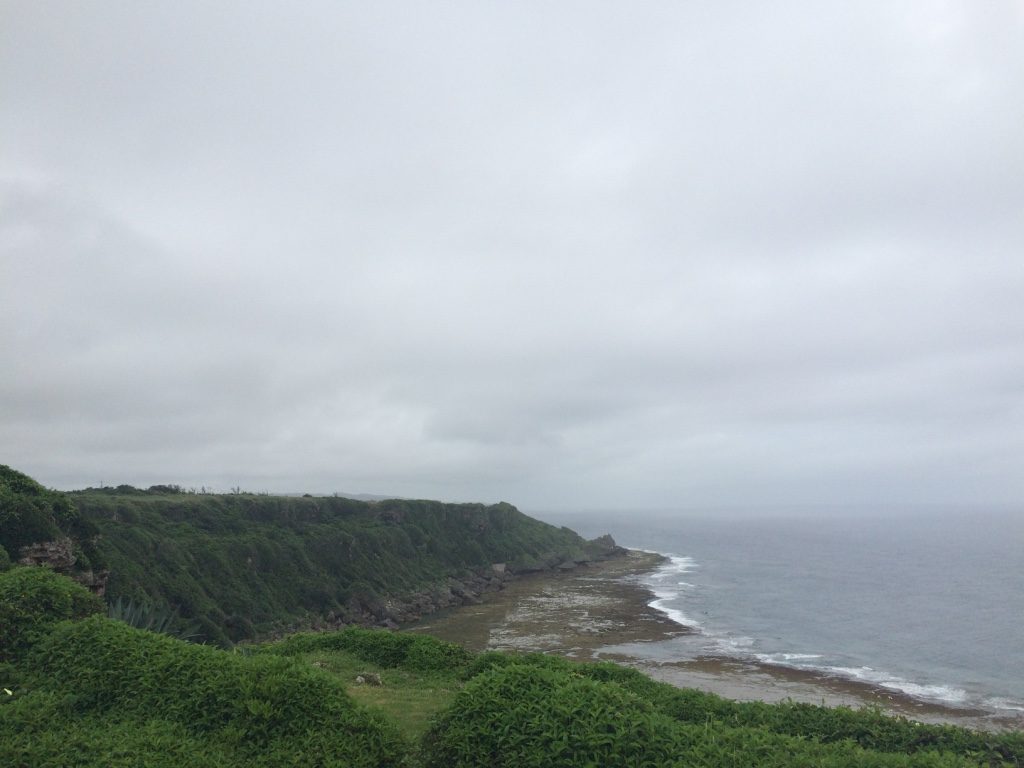
The museum was very informative and really heartbreaking at the same time. I remember learning briefly about WWII events in Okinawa but it was never discussed in detail in Social Studies class. The battle of Okinawa, which is also referred to as the “Typhoon of Steel”, and lasted for 82 days in 1945. More than one third of Okinawa’s population died during those 82 days (~120,000 people). (Tim: They called it the Typhoon of Steel” for how fierce the fighting was, as well as for the insane amount of artillery shells the Allies fired at the island. Apparently over 6.5 million shells were fired at the island over the 82-days of fighting.)
Considering Okinawa is heavily populated with American military and their families, I was interested in learning what the tone of the museum would be. The tone was not anti-American at all, it was actually American sympathetic and seemed almost anti-Japanese (Tim: I would say it felt mostly neutral to me, with more of a slant to the general horrors of war than who was to blame). Even during a testimonial video, a woman who was 16 during 1945, said how the Japanese military gave her and her younger siblings hand grenades to kill themselves if the Americans got close (Tim: she said she pulled the pins because they wanted to die, but they turned out to be duds). She also recalled that other civilians who tried to leave the cave they were hiding in were all shot in the back by Japanese soldiers. When they got so hungry and thirsty and prepared for death, they went to surrender and it was the American soldiers who gave her and her siblings chocolate and hot milk while trying to calm them down. But since they didn’t understand English, they thought the Americans were going to kill them, but in actuality they saved them. This was the general sentiment that I got while reading and listening to the audio guides.
Although Okinawa was technically on the Japanese side, many of the casualties and atrocities during the battle were a result of Japanese military brutality. They suspected anyone who spoke Okinawan (Ryukyuan Languages) of being a spy which could lead to execution. If anyone was caught talking about surrendering, they were killed immediately. The Japanese military also transported thousands of Koreans to Okinawa and other Pacific islands and forced the men into hard labour and the women to become sex slaves (“comfort women”) for the soldiers. Many of the Koreans who were brought to Okinawa for these purposes died during the battle (Tim: The Peace Memorial has a Korean Memorial which states over 10,000 Koreans died in the Battle of Okinawa). For some Okinawans that weren’t heavily indoctrinated in the Japanese war effort, there was a strong sentiment of wanting to surrender early on.
The museum was really well done and I would highly recommend it if you happen to be in Okinawa. The park grounds were extremely peaceful and there were many observation view points which over looked the rocky coast line. While looking over the cliffs, while beautiful, it’s sad to know how many people perished in that very area 61 years ago. They said many Okiniwans and Japanese soldiers committed suicide and jumped over the cliffs when the American attacks became too strong to fight. I feel very sympathetic towards Okiniwans as they had been put in unfortunate situations that the Japanese government placed on them. Okinawa is a very peaceful place, it’s a shame that their history is so tragic.


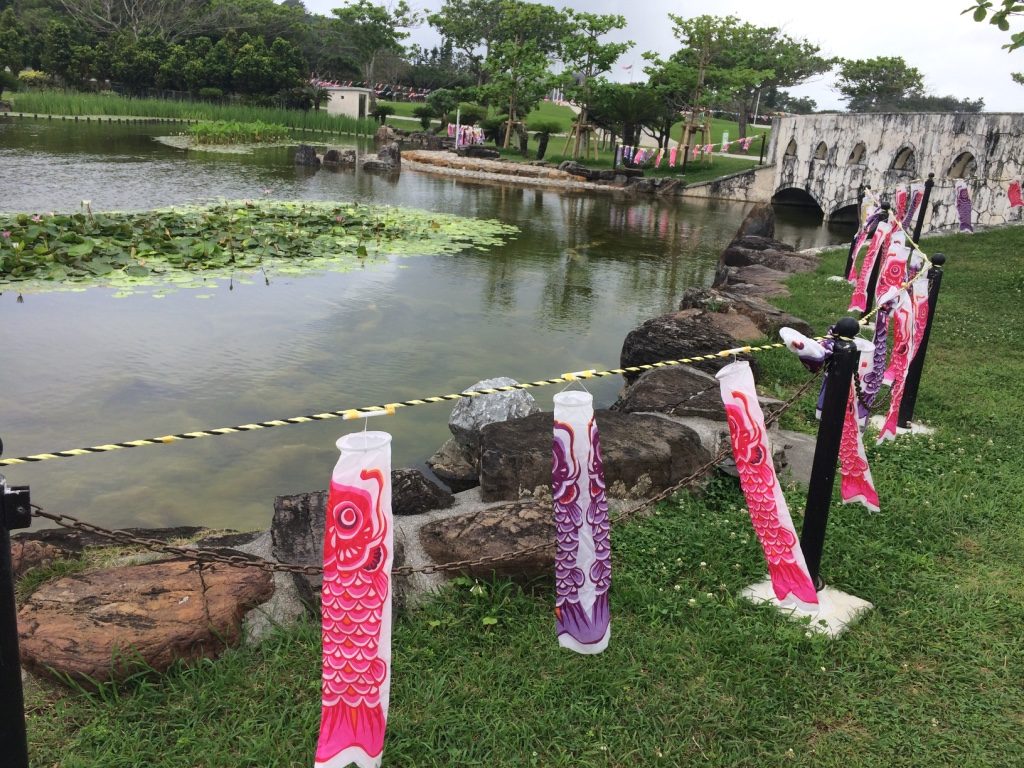

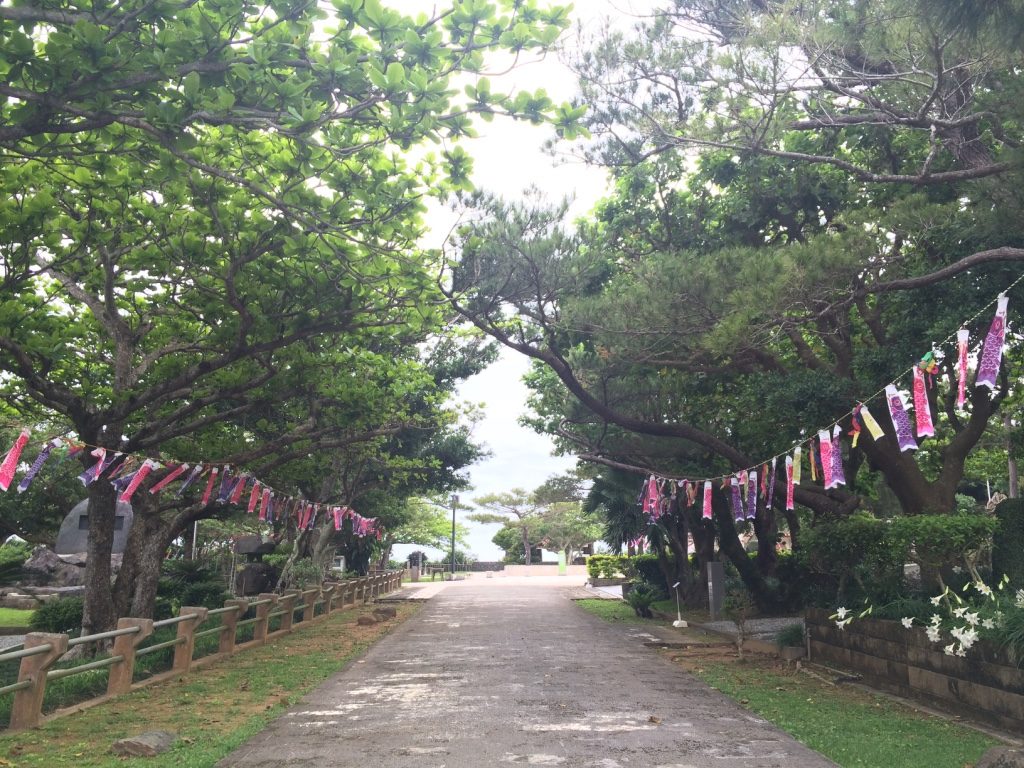
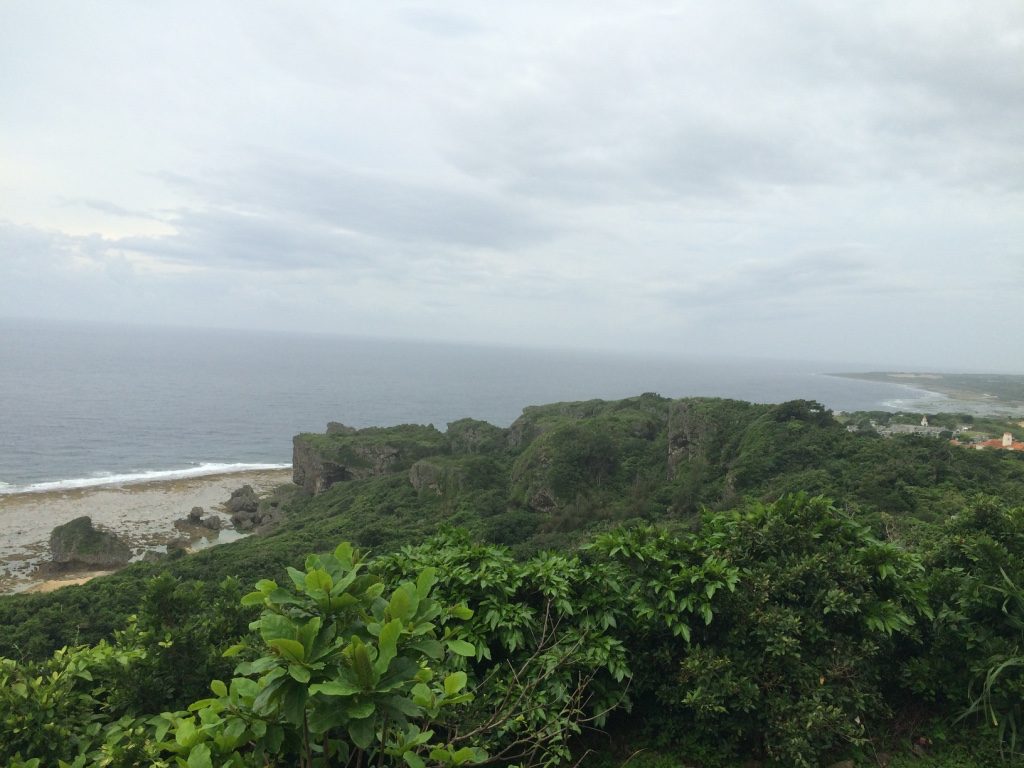


We walked around the park grounds for about an hour and slowly made our way to the bus stop to catch our bus (that comes every hour). As we were waiting, a taxi driver drove past us and offered to take us back to Naha for 2,000 JPY = $22 CAD, which is cheaper than what the bus would cost us (2,100 JPY). The ride back into Naha was a lot quicker than the bus as he took a very direct route back to the city. That was actually my first taxi ride in Japan. It was cool. The door opens and closes on its own (Tim: well, the driver controls it…) and there’s a TV in the middle of the console in the front that shows the news.

Once we got back to Naha, we looked for a restaurant for dinner. We passed by a couple of places and an Italian restaurant actually caught our eye. It was called Bambino’s and it looked like a very cute and quaint restaurant. When we were looking at the menu, the guy inside came out and greeted us and showed us the menu. We were actually deciding between that restaurant and an izakaya but since he was so friendly, we went inside. I guess you can tell that we’ve both been craving more western food recently from our food choices.

We ordered a pizza margarita, caesar salad, oysters in garlic oil, and a meat sauce pasta. Expecting everything to be “Japafied”, we were pleasantly surprised when everything wasn’t (Tim thought the pasta was a bit but I thought it was “normal”). Everything was freshly made and was delicious. The pizza crust was perfectly made, nice and chewy. This totally hit the spot for us. The waiter asked us where we’re from and we told him it was our last day in Okinawa. He asked us if we tried Okinawan food and we told him we had taco rice and soba noodles. He chuckled a bit and said, so your last day you can have Italian!

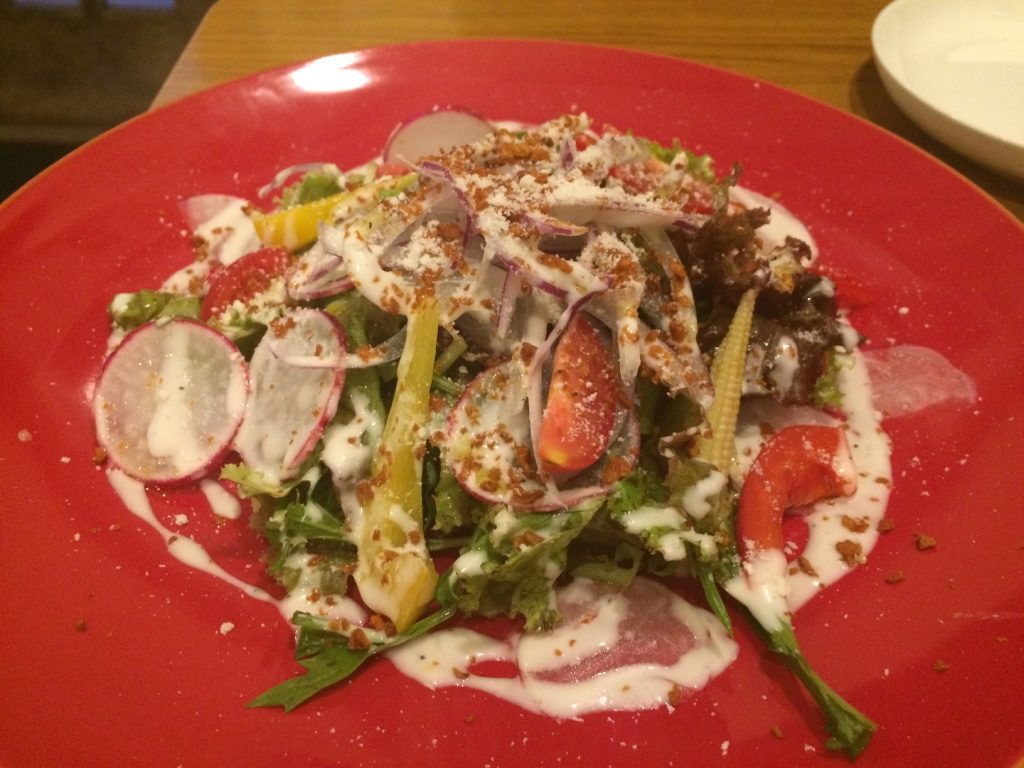


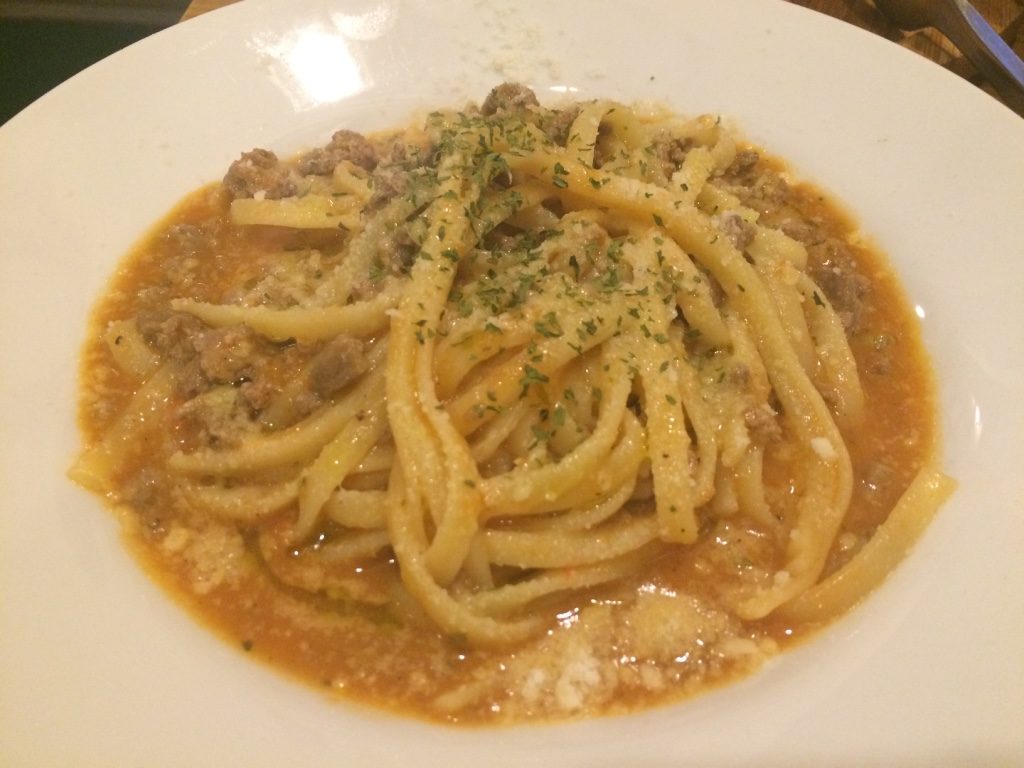
Tomorrow, we’re headed to Sapporo. We’re going from a place with a high temperature of 27 degrees Celsius with humidity to a city that has a high of 9 degrees Celsius. It’s time to layer up!
Before coming to Okinawa, I knew it would be different from mainland Japan, but to experience the difference was very interesting. While walking around Itoman today, Okinawa reminded me a lot of the east coast of Taiwan. I guess it does make sense that Okinawa seemed more Taiwanese than it does Japanese in a lot of ways (Tim: because it’s closer to Taiwan than it is to mainland Japan).
While Okinawa is a resort island for most people, I think staying in Naha was a good experience. I enjoyed being able to see all different parts of the island, which was actually not that trivial since the transportation isn’t very good. Before coming here, I was always curious about Okinawa’s relationship with the Americans and the Japanese government. After learning more about the island and it’s rough history, I think I’m only beginning to understand it’s complex relationships.
Steps today: 25,000



